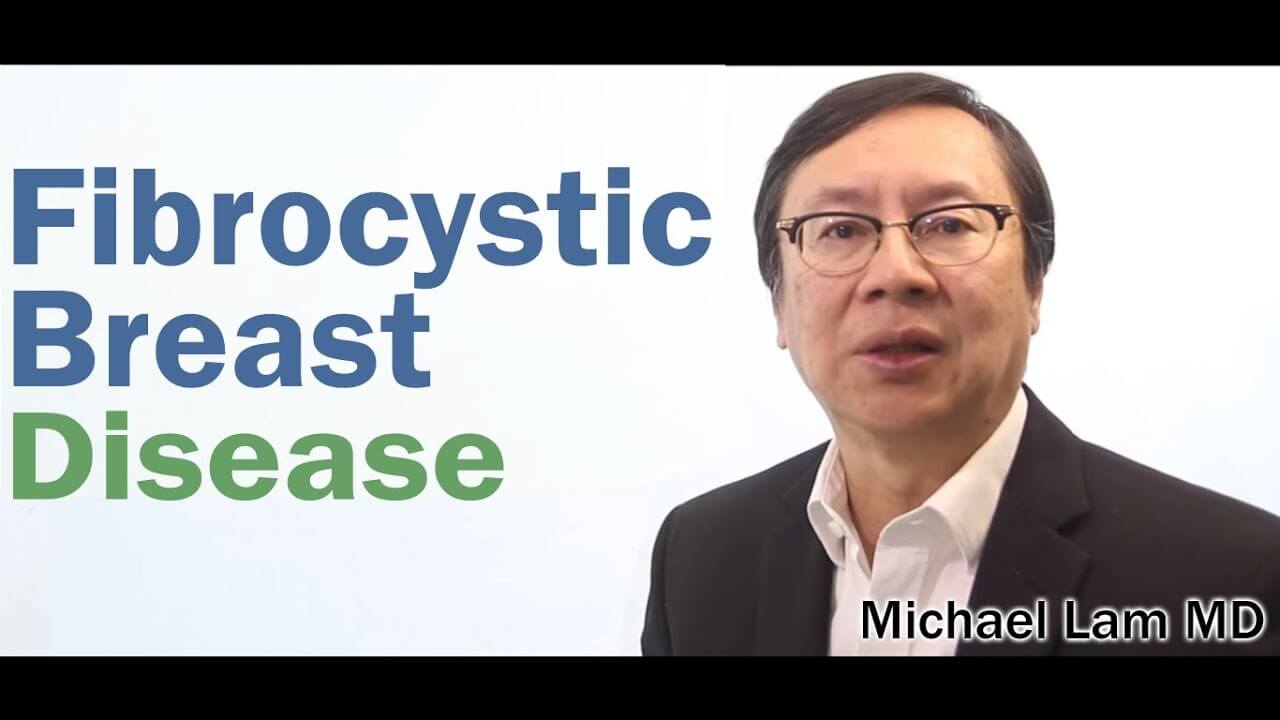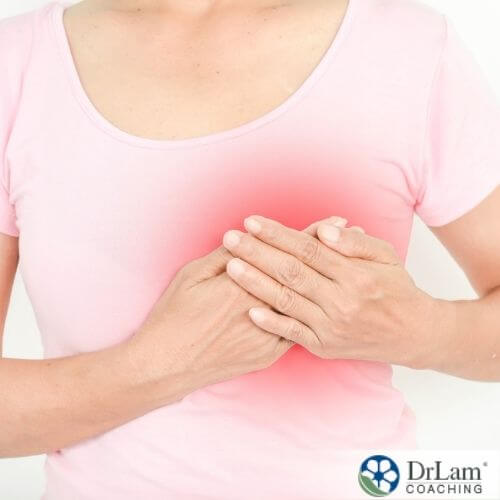
Regular breast checks are essential for every woman. And yet they can cause a lot of confusion and uncertainty, particularly if you feel something like a lump in one of your breasts. It can be tempting to ignore your findings out of fear, but this can be dangerous. At the same time though, a lump doesn’t have to be anything ominous. In fact, it may be due to this common condition known as fibrocystic breast disease.
This is a benign condition that isn’t well understood. In fact, there’s no clear cause of these changes, but there are conditions and issues that may bring it on. Here’s what you need to know about it.
 Fibrocystic breast disease is a benign and noncancerous condition that can make your breasts feel lumpy. It is more accurately known as fibrocystic breast changes, because people with this condition don’t actually have a disease. This condition predominantly affects women and there have been only a few rare cases of men who develop it.
Fibrocystic breast disease is a benign and noncancerous condition that can make your breasts feel lumpy. It is more accurately known as fibrocystic breast changes, because people with this condition don’t actually have a disease. This condition predominantly affects women and there have been only a few rare cases of men who develop it.
This condition affects more than half of women throughout their lives and may cause symptoms such as:
Symptoms of this condition can vary widely. You may have a lump or lumps in one or both breasts, and symptoms can fluctuate throughout the month with hormonal changes. The lumps caused by this condition are usually moveable but can also be fixed in place because of fibrous tissue.
On their own, fibrocystic breast changes aren’t dangerous, and they don’t increase your risk of getting cancer either. However, they can make detecting breast cancer more difficult. You should always see your doctor to get checked out if you feel lumps in your breast or have clear, red, green, or brown nipple discharge.
Fibrocystic breast disease can affect any woman between the ages of 20 and 50. The exact cause of this condition isn’t fully understood, but it’s generally thought to be caused by hormonal changes. As your ovaries release hormones, your breast tissue changes, producing lumps. This is why symptoms are more common during or before your period.
This condition can also cause swelling in the milk-producing glands or thick lumps in your breasts because of excess growth of fibrous tissue. Symptoms may get a little better if you go on birth control pills and worse if you go on hormone therapy. And because this condition is caused by hormones, your symptoms will usually improve or disappear altogether once you go through menopause.
If you notice a lump in your breast and your doctor believes you may have fibrocystic breast disease, there are a number of tests you may have to undergo. These are:
During a mammogram, an X-ray is taken of the breast. This procedure may not be as effective for younger women, who have denser breast tissue.
An ultrasound can be more accurate for younger women with dense breast tissue. It’s also good for distinguishing between cysts and solid masses, which is why it’s often performed along with a mammogram. During this procedure, the ultrasound uses sound waves to produce images of your breast tissue.
After a mammogram and ultrasound, your doctor may be able to identify the nature of the mass in your breast through its density, shape, and other characteristics.
If your doctor is still concerned, they may perform a fine needle biopsy. To do this, a needle is inserted into the lump to remove tissue or fluid. This usually offers more definitive information on the nature of breast lumps.
If your doctor is still concerned, they may send you for a surgical breast biopsy. During this procedure, a small sample of breast tissue is removed for further analysis.
 Once your doctor has confirmed that you have fibrocystic breast disease, most people don’t need further medical intervention. However, if you have large, painful lumps, then you can talk to your doctor about draining the fluid from the cysts using fine-needle aspiration. And in rare cases, your doctor can remove the lumps surgically.
Once your doctor has confirmed that you have fibrocystic breast disease, most people don’t need further medical intervention. However, if you have large, painful lumps, then you can talk to your doctor about draining the fluid from the cysts using fine-needle aspiration. And in rare cases, your doctor can remove the lumps surgically.
However, if your symptoms are mild, then you don’t need these kinds of interventions. Instead, you might benefit from some lifestyle changes that will help manage any symptoms you do experience.
Some effective ways to manage your symptoms include:
If you experience pain, then over-the-counter medications like ibuprofen or acetaminophen can help.
Because oral contraceptives help lower hormone levels, they can also help with the management of this condition.
If your pain isn’t severe, then try applying a warm or cold compress to ease it.
You should also try to wear a well-fitting, supportive bra during the day and at night. Just make sure that it’s not one that causes additional pain or discomfort.
There is some evidence that caffeine may increase the pain of this condition, so try to avoid products that contain this substance like tea, coffee, soda, and chocolate.
Anecdotal evidence suggests that a low-fat diet may help with pain management. You could also try taking essential fatty acids and see how your symptoms respond. There is no scientific evidence that either of these strategies will help, but some women find relief from them.
There is also anecdotal evidence that some supplements such as vitamin E, B complex vitamins, and evening primrose oil may help with symptom management. However, it’s important to talk to your doctor first to ensure that these supplements are safe, dosed correctly, and suitable for your particular needs. High doses of vitamin E, in particular, have been found to be dangerous.
It’s important that you see your doctor regularly even after they’ve identified that you have fibrocystic breast changes. This includes your regular breast exams as per your age recommendations. You should also visit your doctor if you notice any changes such as:
Women with Adrenal Fatigue Syndrome (AFS), a condition caused by chronic stress, often experience fibrocystic breast disease. This is usually caused by imbalances in the NeuroEndoMetabolic (NEM) stress response and in the Hormonal Circuit. These types of imbalances can occur when the NEM stress response is overused and the adrenal glands start to fatigue.
AFS occurs when the body demands high levels of cortisol over a prolonged period. Cortisol is known as the stress hormone, and it’s responsible for the fight or flight response. This hormone activates certain functions within your body while shutting down others. For example, it increases your alertness and awareness while shutting down digestion. This allows you to prioritize fleeing from a threat over digesting your dinner, which can be completed later once you are safely away from danger.
This is supposed to be a short-term response, but with the chronic stressors in the modern world, the NEM stress response becomes overused. Your body continues to demand high levels of cortisol to cope with the stress, which can cause the adrenal glands to malfunction. It also causes imbalances in the body’s circuits. The body’s six interconnected circuits each include three components that work together to help resolve stress and perform other essential functions. So imbalances in one area can create problems in other areas, which is why AFS symptoms can be so varied.
 Imbalances in the Hormonal Circuit can be a key cause of fibrocystic breast disease. The Hormonal Circuit includes the adrenal glands, so it is closely affected by chronic stress. As the adrenals fatigue because of the ongoing high demand for cortisol, the other two components of the circuit, the thyroid and the ovaries in women (gonads in men), start to malfunction as well.
Imbalances in the Hormonal Circuit can be a key cause of fibrocystic breast disease. The Hormonal Circuit includes the adrenal glands, so it is closely affected by chronic stress. As the adrenals fatigue because of the ongoing high demand for cortisol, the other two components of the circuit, the thyroid and the ovaries in women (gonads in men), start to malfunction as well.
These three components are strongly interconnected, so as one declines in health and function, the others naturally follow. And because the Hormonal Circuit is responsible for controlling and producing a huge variety of essential hormones, this can create a lot of problems. These types of imbalances may also lead to fibrocystic breast changes.
Identifying these underlying causes is key to addressing issues caused by AFS and circuit imbalances. That’s why it’s so important that you seek out medical assistance from someone who’s aware of AFS and how it can impact every part of your body.
Here’s how the separate components of the Hormonal Circuit can contribute to fibrocystic breast changes:
When you have AFS, your adrenal glands are usually fatigued. The adrenal glands are responsible for releasing more than 50 hormones into the bloodstream, so this will severely impact your body’s hormone balance.
One of the most important hormones for fibrocystic breast disease is progesterone. Progesterone helps to balance estrogen, and it also helps to protect against lumpy, painful breasts.
Most of the progesterone in your body is produced by your ovaries. As the adrenal glands fatigue, the function and health of the ovaries will as well. This means they will struggle to produce the balance of hormones that your body needs.
Many women experience estrogen dominance as a result of AFS and Hormonal Circuit imbalances, which may contribute to fibrocystic breast changes. Progesterone levels can also drop sharply with AFS, which may also cause or worsen breast lumps.
As the Hormonal Circuit degrades, the thyroid function will as well. Your thyroid only has an indirect role in reproductive hormones. It helps to regulate your body’s sensitivity to estrogen and testosterone. This could contribute to hormone imbalances that you experience because of AFS and to the resulting fibrocystic breast changes.
Fibrocystic breast disease can be a scary condition. It can leave you worrying about cancer with every breast exam and obscure more dangerous lumps. If you experience this condition, then here’s what you need to do to keep yourself safe:
To get more info on hormone imbalances and AFS, talk to our team today at +1 (626) 571-1234 or click here for personalized advice on women’s health and adrenal care.
Fibrocystic breast disease is a common condition that causes lumpy breasts in response to hormonal changes. On its own, it isn’t dangerous, but it can obscure other, more dangerous growths in your breasts, so you need to get any suspicious lump checked out.
